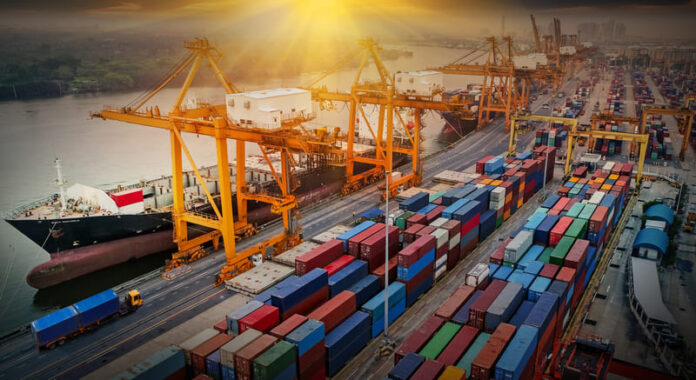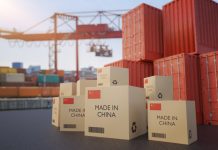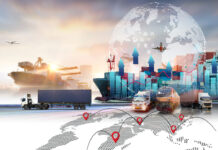Climate change is transforming how supply chains operate around the world. Rising temperatures and extreme weather conditions disrupt transportation networks, leading to delays and increased costs. As a result, businesses are forced to adapt their strategies to maintain efficiency and minimize losses.
The impact extends to raw material sourcing, where shifting climates affect the availability and quality of resources. For instance, agricultural yields may drop, causing shortages and price hikes that ripple through supply chains. Companies must invest in sustainable practices and diversify their suppliers to mitigate these risks.
Increased regulatory pressures and consumer demand for sustainable products drive businesses to reassess their environmental impact. They must balance economic goals with the necessity for long-term resilience amid shifting environmental conditions. This dual focus is not just a trend but a critical step in future-proofing supply chains against ongoing climate challenges.
Impact on Global Supply Chain Dynamics
Climate change significantly disrupts global supply chain dynamics, affecting logistics, manufacturing, and agriculture. These disruptions lead to increased costs, delays, and challenges in resource availability.
Logistics and Transportation Disruptions
Rising sea levels and extreme weather events disrupt shipping lanes and ports. Hurricanes and floods can halt operations for days or weeks. A USA international cargo forwarding company is sure to face challenges in rerouting shipments, causing delays.
Temperature fluctuations impact transportation infrastructure, impacting roads and railways. Heatwaves can buckle asphalt, leading to temporary road closures. This affects the reliability and efficiency of goods movement. Additionally, local transport systems require restructuring to mitigate these impacts.
Insurance costs are rising due to increased risk of damage to goods in transit. This affects pricing, leading to overall higher costs for consumers and businesses alike. Adapting logistics strategies is essential to maintaining efficiency.
Manufacturing and Production Shifts
Climate change forces shifts in manufacturing locations. Droughts and water scarcity in some regions limit production capabilities. Industries reliant on water, such as textiles, need to reassess their operations and potentially relocate to areas with stable water supplies.
Disruption in energy supply caused by extreme weather affects production stability. Factories may face power outages or increased energy costs, prompting a need for alternative energy sources. This impacts production timelines and costs.
Supply chains dependent on raw materials face challenges as climate change affects availability. Coffee and cocoa production are extensively impacted, requiring manufacturers to seek new, climate-resilient sources. Adaptation involves investing in sustainable supply practices and diversification.
Agriculture and Food Security Concerns
Varying weather patterns drastically impact crop yields. Prolonged droughts and shifting seasons reduce agricultural productivity in regions like Southern Africa and parts of Asia, leading to supply shortages.
Pests and diseases thrive under changing climatic conditions, further threatening crops. This leads to increased use of pesticides and a need for genetically resilient crops. As a result, the agricultural sector must innovate to maintain food security.
Global food distribution networks are impacted by these changes, leading to fluctuations in food prices and availability. Managing these impacts requires a concerted effort from both global and local entities to enhance resilience and ensure consistent food supply, especially in vulnerable regions.
Adaptive Strategies and Solutions
Businesses are employing new technologies and policies to address climate change impacts on supply chains. These efforts include embracing AI in logistics and government incentives for sustainable practices.
Innovations in Supply Chain Management
The adoption of artificial intelligence and machine learning is transforming logistics and transportation. Companies are using predictive analytics to streamline operations and reduce emissions by optimizing routes and cargo loads. This not only cuts costs but also helps in lowering carbon footprints.
Renewable energy sources are also being integrated into warehouses and distribution centers. Transitioning to solar panels and wind turbines allows companies to reduce reliance on fossil fuels. Such initiatives contribute to sustainability goals and offer potential cost savings over time.
Policy Changes and Governmental Support
Governments worldwide are implementing policies that promote sustainable supply chain practices. Tax incentives and grants are available for companies that invest in green technologies and infrastructure. For instance, regulations in the European Union encourage businesses to adopt circular economy principles, minimizing waste and promoting recycling.
Regulations are also being enforced to reduce greenhouse gas emissions. Legislation may require companies to report climate-related risks and efforts to mitigate them. These policies drive closer collaboration between businesses and regulators, fostering environments where innovation can thrive.
Environmental certifications and standards are helping businesses demonstrate their commitment to sustainability. Programs such as LEED and ENERGY STAR provide frameworks for evaluating and reducing environmental impact. These initiatives can enhance brand reputation and align organizations with global sustainability targets.




































